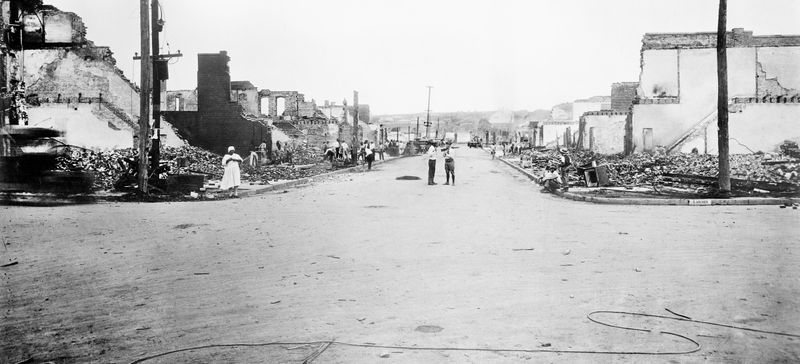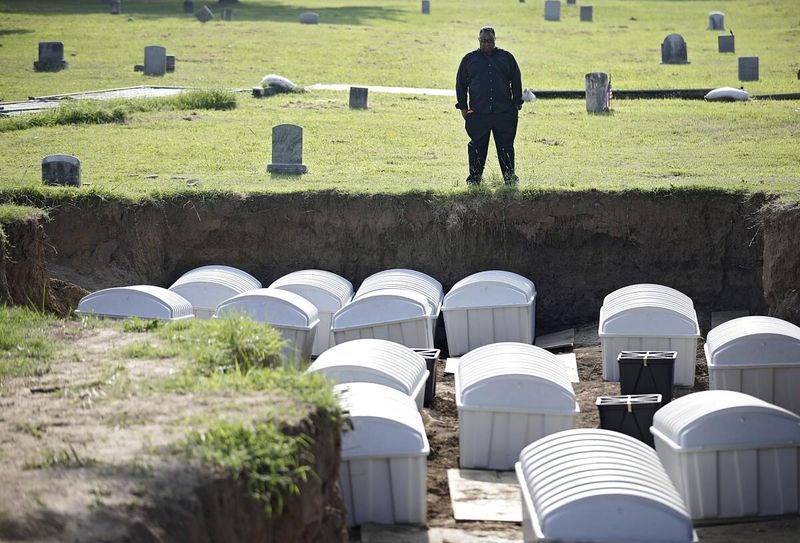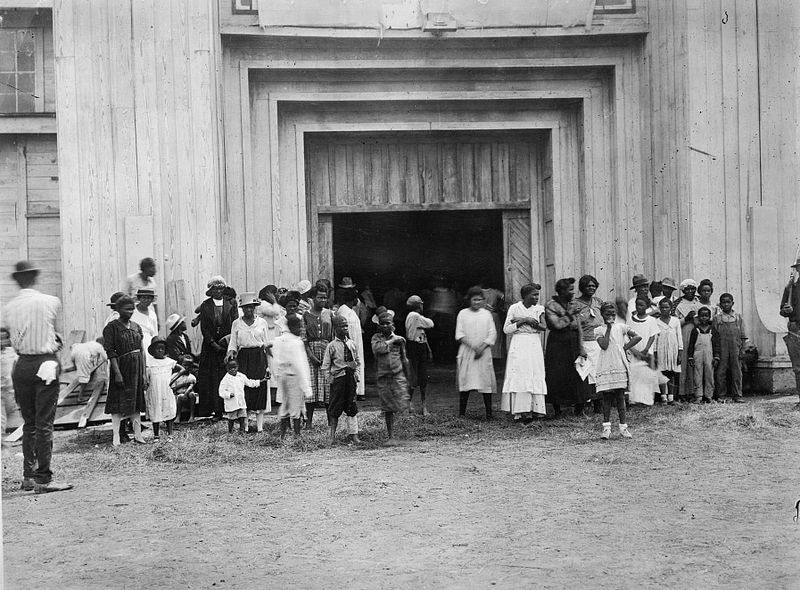One of America’s most horrific acts of racial violence was buried in history for decades. In 1921, Tulsa, Oklahoma became the site of a devastating attack on a thriving Black community.
The massacre destroyed lives, erased generational wealth, and left deep wounds that still haven’t healed. Now, a century later, the city is finally taking steps toward accountability with a historic $105 million payment.
1. Greenwood: The Black Wall Street That Vanished Overnight
Before the destruction, Tulsa’s Greenwood District stood as a beacon of Black prosperity. Spanning 35 blocks, this self-sufficient community boasted over 200 Black-owned businesses including hotels, theaters, restaurants, and professional offices.
Money circulated within the community up to 19 times before leaving, creating remarkable wealth despite the harsh segregation era. Greenwood residents owned their homes, built schools, and established churches.
The district represented what was possible when Black Americans controlled their economic destiny – precisely why its success threatened the racial hierarchy of the time.
2. A False Accusation Ignites Deadly Violence
The match that lit the powder keg came on May 30, 1921. Dick Rowland, a 19-year-old Black shoe shiner, entered an elevator operated by Sarah Page, a white woman. What happened next remains unclear, but a scream led to Rowland’s arrest for alleged assault.
The Tulsa Tribune published an inflammatory article with the headline “To Lynch Negro Tonight.” White mobs gathered outside the courthouse while Black veterans from World War I arrived to protect Rowland.
A confrontation between the groups escalated when a white man attempted to disarm a Black veteran. A shot rang out, and chaos erupted.
3. Total Destruction: 35 Blocks Reduced to Ashes
The scale of destruction was unprecedented. White mobs, many deputized and armed by city officials, systematically destroyed 35 square blocks of Greenwood. They used private aircraft to drop incendiary devices – likely the first aerial bombing on U.S. soil.
Over 1,200 homes were burned to the ground. Every church, school, hospital, and library – gone. Not a single structure remained standing in many areas.
The financial loss in today’s dollars would exceed $30 million. But the true cost – the erasure of generational wealth and opportunity – remains incalculable.
4. Death Toll: Hundreds Lost in 48 Hours of Terror
The exact number of victims remains unknown, a testament to the deliberate cover-up that followed. Conservative estimates place the death toll around 100, while others suggest up to 300 Black residents were murdered during the 48-hour rampage.
Bodies were reportedly thrown into the Arkansas River or buried in unmarked mass graves. Recent archaeological excavations have uncovered potential mass burial sites at Oaklawn Cemetery.
Many victims died while defending their homes and businesses. Others were shot while fleeing. The massacre claimed lives across generations – from infants to elders.
5. Refugee Crisis: 10,000 Black Tulsans Left Homeless
The morning after revealed a humanitarian disaster. Nearly 10,000 Black residents – the entire population of Greenwood – suddenly found themselves homeless. Families huddled in tent cities through harsh weather conditions for months.
The Red Cross provided critical aid, but the city government offered zero assistance. In fact, insurance companies denied claims by classifying the massacre as a “riot,” making Black property owners liable for their own losses.
Many survivors fled Tulsa permanently, creating a diaspora that scattered families across the country. Those who stayed faced the monumental task of rebuilding from nothing.
6. Conspiracy of Silence: How America Forgot a Massacre
For decades, the Tulsa Race Massacre remained virtually erased from public consciousness. Police records mysteriously disappeared. Newspaper archives were selectively edited. Not a single person was ever charged for the violence.
Oklahoma history textbooks omitted any mention of the events until the 1990s. Survivors were discouraged from speaking publicly about their experiences, creating a generational silence.
This wasn’t accidental forgetfulness – it was a coordinated effort to bury evidence of one of America’s worst racial atrocities. The conspiracy of silence allowed Tulsa to rebuild its image while denying justice to victims.
7. Living Witnesses: Survivors Still Seek Justice Today
Remarkably, several survivors of the massacre are still alive today. Viola Fletcher, now 109, testified before Congress in 2021: “I still see Black men being shot, Black bodies lying in the street. I still smell smoke and see fire. I still see Black businesses being burned. I still hear airplanes flying overhead. I hear the screams.”
Lessie Benningfield Randle, 108, and Hughes Van Ellis, 102, have also shared their harrowing stories. These centenarians remember the prosperity before the destruction and the lifetime of trauma that followed.
Their testimonies provide crucial firsthand accounts of history nearly erased.
8. Breaking Point: The $105 Million Reparations Package
After a century of denial, Tulsa has approved a historic $105 million reparations package. The funds will support economic development in the Greenwood District, create scholarship opportunities, and provide direct payments to the remaining survivors.
This decision follows years of legal battles and growing public pressure. A lawsuit filed by survivors and descendants argued that the city and state created a “public nuisance” that continues to impact the Black community today.
While some call the amount insufficient compared to the estimated $600 million in damages (in today’s dollars), it represents the first substantial acknowledgment of responsibility.
9. Unfinished Business: The Long Road to Healing Continues
Money alone cannot heal century-old wounds. The Greenwood community today bears little resemblance to its former glory – a highway built in the 1960s physically divided what remained, and gentrification threatens to erase its historical significance.
Activists emphasize that true reconciliation requires more than financial compensation. They call for curriculum changes in schools, criminal justice reforms, and ongoing investment in Black-owned businesses.
The payment marks a pivotal moment in addressing historical injustice in America. Other communities traumatized by racial violence are watching Tulsa’s example as they pursue their own paths to reconciliation.









